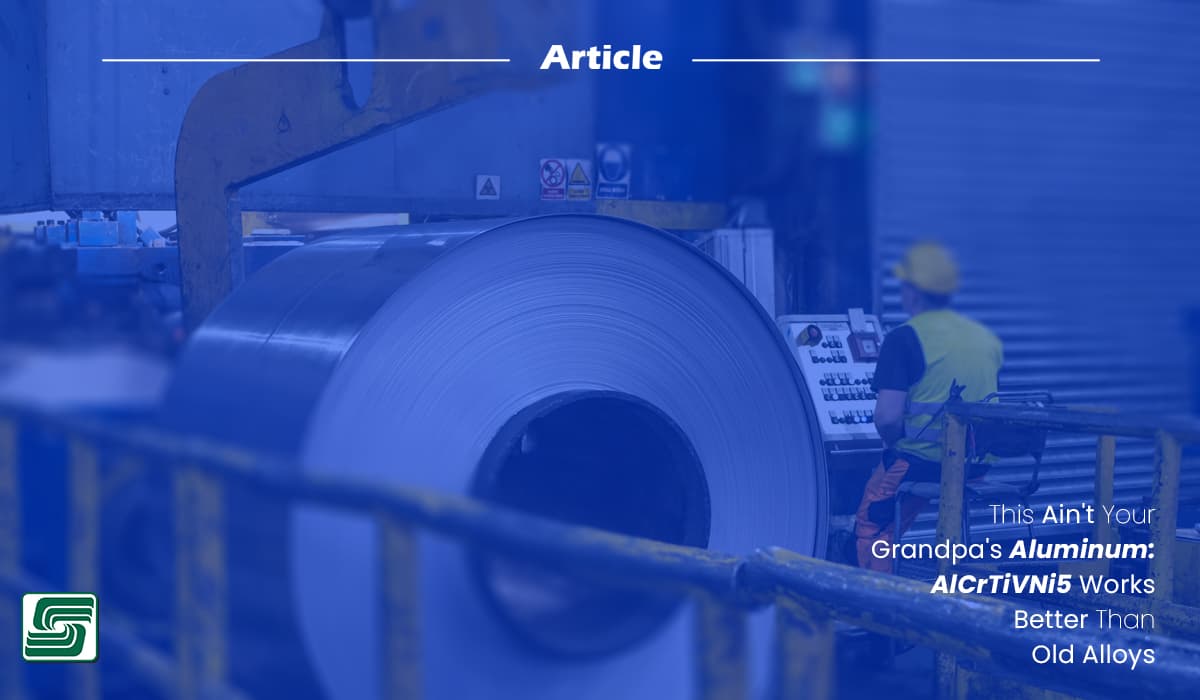
Before the term meme existed, one of the earliest examples of a meme illustrated a set of dinosaur bones with a caption reading, "Evolve or die."
Regardless of the topic, if something can't adjust to the advent time, its chances of succeeding become much harder.
For example, consider manufacturing. Before WWI, there were two ways of connecting separate pieces of metal: forge welding and rivets. Both methods were time-consuming and required tremendous effort.
During WWI, FCAW was developed, quickening the shipbuilding process and producing safer and lighter ships. This production increase helped the Allies quickly move more material, helping win the war.
The evolution from rivets to FCAW is an extreme example of manufacturing evolution. Today, advancements in metallurgy continue to improve on already-proven metals, such as aluminum.
Aluminum alloys, like Aluminum alloy, are very important in many industries. They help make things like HVAC systems, smartphones, car parts, and boat equipment. Slight changes in their chemical mix change how strong they are. It also affects how easy they are to work with, how well they resist rust, and how they conduct electricity. Aluminum is a key part of modern life. It is found in airplanes, cars, drink cans, and cooking tools. Its uses spread across transportation, packaging, and building sectors.
Development of AlCrTiVNi5
In 1909, Duralumin was invented. It was a big step for aluminum alloys. This light but strong material became the top choice in planes. It showed great strength, hardness, and flexibility.
The discovery of the AlCrTiVNi5 alloy is a tremendous leap in materials science. This alloy has amazing properties. It stays stable under heat, expands very little, and is tough yet flexible.
Properties of CCAs
- Complex Concentrated Alloys (CCAs) are special because they have at least four key elements in high amounts.
- They offer many benefits that regular alloys can't match.
- Compared to normal alloys, CCAs are much better.
- They are stronger, more flexible, and resist damage from the environment better.
Relevance of AlCrTiVNi5
- AlCrTiVNi5 has noble qualities and is used in many areas, such as airplane and advanced car parts, opening up new engineering possibilities.
- AlCrTiVNi5 is better than the current materials. Its strength-to-weight ratio and durability make it a top choice for future industrial uses.
Composition of AlCrTiVNi5
- AlCrTiVNi5 is made from aluminum, chromium, titanium, vanadium, and nickel. This mix works well in high heat.
- Producing AlCrTiVNi5 requires careful steps to blend the metals. The amount of each metal is controlled for strength, durability, and heat stability.
Experimental Procedures
- Preparing AlCrTiVNi5 samples needs careful work. The samples are shaped and cleaned to remove any bad stuff.
- Testing AlCrTiVNi5 includes checking its mechanical, thermal, and chemical properties. These tests show how the alloy acts in different conditions.
Properties
Mechanical Properties
- AlCrTiVNi5 is very strong. It handles high-stress and stretching well, making it great for tough jobs. Its structure stays solid even in hard conditions.
- The hardness of AlCrTiVNi5 is amazing. It resists wear and bending well, meaning parts last longer. This makes it perfect for places that need durability.
Thermal Properties
- The conductivity of AlCrTiVNi5 is special. It transfers heat efficiently, which is good for temperature control tasks. This efficient transfer boosts its use in different heat settings.
- With low expansion, AlCrTiVNi5 stays stable when temperatures change. Its small thermal expansion keeps it from warping, ensuring steady performance.
Chemical Properties
- AlCrTiVNi5 fights off rust better than many alloys. It lasts longer in harsh spots, keeping its shape and strength, making it a good pick where rust is a problem.
- The oxidation resistance of AlCrTiVNi5 is strong, too. It stays stable at high temperatures, protecting its surface from oxygen damage, which helps it last longer.
Comparative Analysis: Performance against other alloys
- AlCrTiVNi5 is better than many other alloys. It works well in high heat and against rust. It stays strong, does not expand, and bends without breaking.
- In tough conditions, AlCrTiVNi5 lasts longer than other alloys. Its good properties stay the same for a long time.
Cost-effectiveness
- AlCrTiVNi5 is worth the money. It works great in hot and rusty places, lasts a long time, and saves on repair costs.
Future Prospects: Improvements
Alloy changes
- Changing the mix of AlCrTiVNi5 improves it. Adjusting the amounts of aluminum, chromium, titanium, vanadium, and nickel helps make the alloy suitable for special uses.
Making it better
- They are improving how we make AlCrTiVNi5 helps a lot. Better steps mean easier making and stronger material, which helps the alloy work well for additional needs.
New Uses
Airplanes
Cars
- Car makers use AlCrTiVNi5 to make better cars. It is strong but light, which helps car parts last longer and work better.
In Sum
The new aluminum alloy, AlCrTiVNi5, works better than old alloys. It is strong, lasts long, and bends without breaking, which makes it great for many industries. Experts think AlCrTiVNi5 will be used in new tech like hydrogen engines. Its good heat and strength properties are very useful.
In the future, AlCrTiVNi5 could be big in planes and cars. More research helps find new ways to use this amazing alloy.